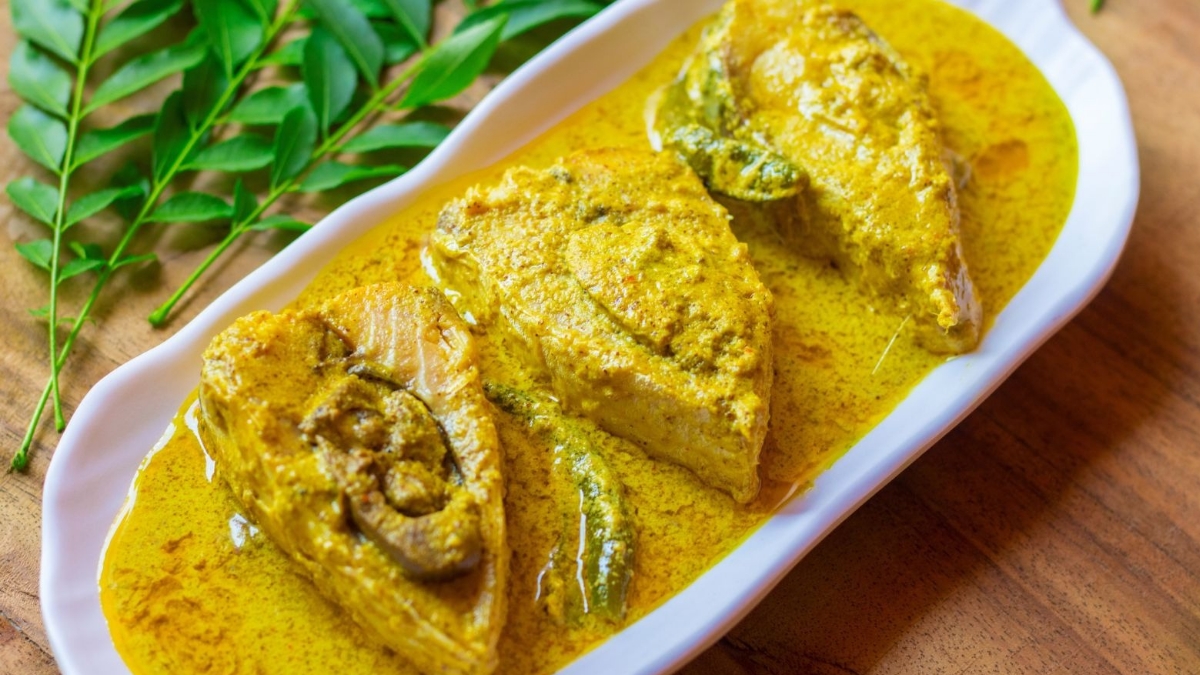
Steamed Hilsa, or Ilish Bhapa, is a crown jewel of Bengali cuisine, celebrated for its simplicity and rich, mustard-infused flavor. This dish is not only culturally significant but also a culinary delight during the monsoon season when fresh hilsa is abundantly available. Mastering this preparation at home allows you to enjoy the delicate taste of hilsa without overcomplicating the cooking process. Below is a detailed, authentic guide on how to make steamed hilsa at home, using only essential ingredients to preserve its traditional character.
1. Choosing Fresh Hilsa Fish for Steaming Enhances Flavor and Texture
When preparing steamed hilsa, the quality and freshness of the fish are paramount. Ideally, choose hilsa weighing between 800g to 1.2kg, with a silvery shine and soft belly. Fresh hilsa smells mildly briny, not fishy. Avoid frozen or previously cut fish to retain the natural oiliness, which contributes to the richness of the dish. Slice the fish into thick steaks (usually 6–8 pieces), rinse gently, and pat dry with a soft cloth or kitchen towel. This preparation step is crucial to help the mustard paste adhere properly later in the process.
2. Grinding a Balanced Mustard Paste is Key to Traditional Steamed Hilsa
The mustard paste forms the heart of this dish, so precision in its preparation is vital. Use a 2:1 ratio of yellow mustard to black mustard seeds (e.g., 2 tbsp yellow, 1 tbsp black) for balance. Soak the seeds for 20–30 minutes to reduce bitterness, then grind them with 2–3 green chilies, a pinch of salt, and just enough water to make a thick, smooth paste. Strain if necessary to remove husk for a smoother texture. Add 2–3 tbsp of mustard oil to the paste for added aroma and authenticity. This paste will coat the hilsa and infuse it with its signature pungency during steaming.
3. Marinating Hilsa with Mustard Paste and Mustard Oil for Depth of Flavor
Once the mustard paste is ready, mix it with salt, turmeric powder (½ tsp), and additional mustard oil (2 tbsp). Coat each hilsa piece generously with this marinade. Lay the pieces in a flat, lidded container or a banana leaf-lined bowl suitable for steaming. Place 3–4 slit green chilies over the fish for added heat and aroma. Let it marinate for at least 20–30 minutes. This resting time allows the flavors to permeate the fish, ensuring every bite is robust and well-rounded when steamed.
4. Steaming Technique for Ilish Bhapa: Traditional Methods that Work at Home
The traditional method of steaming hilsa involves using a steel tiffin box, pressure cooker without the whistle, or a double boiler setup. Place the marinated fish in the container, seal it tightly (either with a lid or foil), and steam over medium heat for 20–25 minutes. If using a pressure cooker, add water at the base, place a stand, and cook without the weight. Do not oversteam, as hilsa is delicate and overcooking will ruin its texture. A well-steamed hilsa should flake easily and retain its moisture, bathing in a mustard-rich gravy.
5. Serving Steamed Hilsa with Rice: Tips to Elevate the Dining Experience
Steamed hilsa is best served hot with plain steamed rice. Drizzle some of the leftover mustard oil from the steamed container onto the rice for added flavor. Avoid pairing it with too many side dishes to keep the focus on the hilsa’s delicate flavor. Traditionally, a touch of lemon juice can be offered separately, though purists prefer it unadulterated. Garnish with a green chili and a few mustard seeds if desired. For an authentic Bengali experience, serve on a banana leaf during special occasions or family lunches.
Making steamed hilsa at home is not just about following a recipe—it’s about preserving a culinary tradition. With careful selection of fish, attention to the mustard paste, and proper steaming techniques, you can recreate this iconic Bengali dish in your own kitchen.
